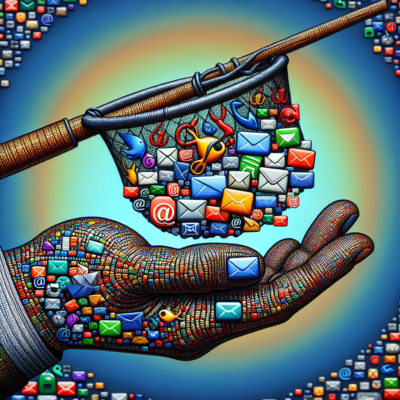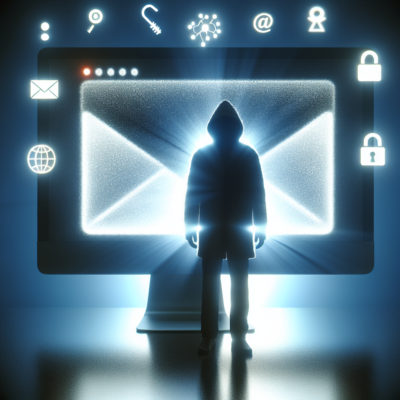Fake Phishing Emails
Ever received an email that just felt off, like it was too good to be true? A surprise lottery win from a competition you don’t remember entering, or an urgent request from your CEO that arrived just when she’s on vacation? If so, you've likely brushed shoulders with a phishing email, a deceptive communication that aims to hook you in and reel in your sensitive information.
At LinkSec, we understand how challenging it can be to navigate the murky waters of email security, especially in our digitally saturated world. This is why we’re committed to empowering businesses to reduce human risk via comprehensive cybersecurity awareness training. We've devoted ourselves to creating an engaging, easy-to-understand resource that aims to arm you and your employees with the knowledge needed to spot these deceitful messages before they wreak havoc.
We've build this phishing simulation tool to give you a deep dive experience into the anatomy of phishing emails. What's in them, how they deceive, and most importantly, how you can spot them. Let’s embark on this journey together, starting with our curated library of phishing emails that are designed to educate and enlighten.
 Curated Library of Phishing Emails
Curated Library of Phishing Emails
Imagine a carefully curated art gallery, but instead of Van Gogh’s or Da Vinci’s, it showcases deceivingly authentic-looking emails crafted by cybercriminals. Yes, our library of phishing emails is just that—a repository of some of the most notorious phishing tactics aimed at tricking unsuspecting individuals.
Our phishing email library features various types encountered in the wild:
- Spear Phishing Emails: Highly targeted attacks focusing on specific individuals or organizations.
- Clone Phishing: Duplicate legitimate emails but with malicious links or attachments.
- Whaling: Aim at senior executives to steal sensitive information or funds.
- Business Email Compromise (BEC): Exploiting trusted business relationships to coerce individuals into taking harmful actions.
Each sample in our collection comes with annotations that deconstruct the tricks and tactics used, helping you to clearly see the red flags.
What's in a Phishing Email?
Now, let’s unpack a typical phishing email and demystify its components. Imagine receiving an email with the allure of a wolf in sheep's clothing, friendly on the surface but with malicious intent simmering beneath.
 Unsolicited Email
Unsolicited Email
Picture this: an email from a distant relative or an unknown business promising a fortune. Unsolicited emails often come out of the blue, without any context, instantly raising suspicion.- Instilling a Sense of Urgency
Phishers thrive on urgency. An email might claim your account is at risk and you must act NOW! It often feels like a ticking time bomb, meant to get you to act without thinking. To echo another’s panicked heartbeat disturbs the calm sea of rational thinking. - Fear of Missing Out (FOMO)
Limited-time lucrative offers or exclusive deals create a fear of missing out. The temptation is much like a mirage in a desert, promising relief but leading nowhere. - Suspicious Email Addresses
Legitimate-looking emails can come from addresses that are just one character off from the real deal. Imagine receiving an email from your CEO's address, except there’s an extra 'o' you didn't notice at first glance. - Generic Greetings and Lack of Personalization
Phishing emails often start with vague salutations like "Dear User" instead of your name. The impersonal touch indicates something amiss and reflects the sender’s broader, less targeted fishing net approach. - Visual Imitation
Every phishing email is like an imposter at a masquerade ball, borrowing the appearance of trustworthiness. Logos, colors, and design elements are copied meticulously, but often with subtle mistakes—a distorted logo or off-brand color shades can be crucial tells. - Grammar and Spelling Errors
Even the best-made masks sometimes have cracks. Minor grammar and spelling mistakes are often the simplest giveaways of a hastily thrown-together phishing attempt. These emails, much like poorly edited manuscripts, lose credibility upon closer inspection. - Emotional Appeal
Cybercriminals aren’t above playing the empathy card. An urgent plea for help from a 'friend in distress’ can cloud judgment and rush you into action before thinking. - Unusual Requests or Offers
Lastly, phishing emails can contain requests that just feel off—unexpected password resets, unscheduled payments, or unrequested software installs. Think of these as wolves inviting you to let them into your sheepfold.
By understanding and identifying these elements, we can better defend our inboxes from digital wolves in sheep’s clothing. As security professionals, it's paramount to pass these lessons down through the ranks, ensuring that all eyes are as vigilant as ours.
How to Identify Phishing Emails
Identifying phishing emails is like mastering the art of reading between the lines. It requires a keen eye for detail and a healthy dose of skepticism. Here’s how you can sharpen your phishing detection skills:
- Hover Over Links to Check URLs
A classic phishing tactic is embedding malicious links behind seemingly legitimate text. Before clicking any link, hover your cursor over it to reveal the actual URL. If it looks suspicious or doesn't match the stated destination, it's a red flag. Think of it as peeking behind the curtain before stepping into the unknown. - Verify Authenticity
If an email prompts you to do something unusual—like transferring funds or sharing sensitive information—pause and verify its validity through a reliable channel. Contact the apparent sender directly using known contact details, rather than replying to the email. This extra step is akin to calling the bank to confirm a fishy transaction before it drains your account. - Look for Anomalies in Attachments
Be cautious of unsolicited attachments, especially if they come in uncommon file types (.exe, .scr, or .zip). Even seemingly benign file types can harbor threats. Before opening any attachment, ensure it’s expected and passes scrutiny. Think of it as inspecting a gift for hidden traps—what glitters isn't always gold.
As the adage goes, smooth seas do not make skillful sailors—neither do untested employees make a cyber-secure organization. The seas of digital threats are always choppy, but with cybersecurity training and phishing simulations, you and your team can navigate them with confidence.

